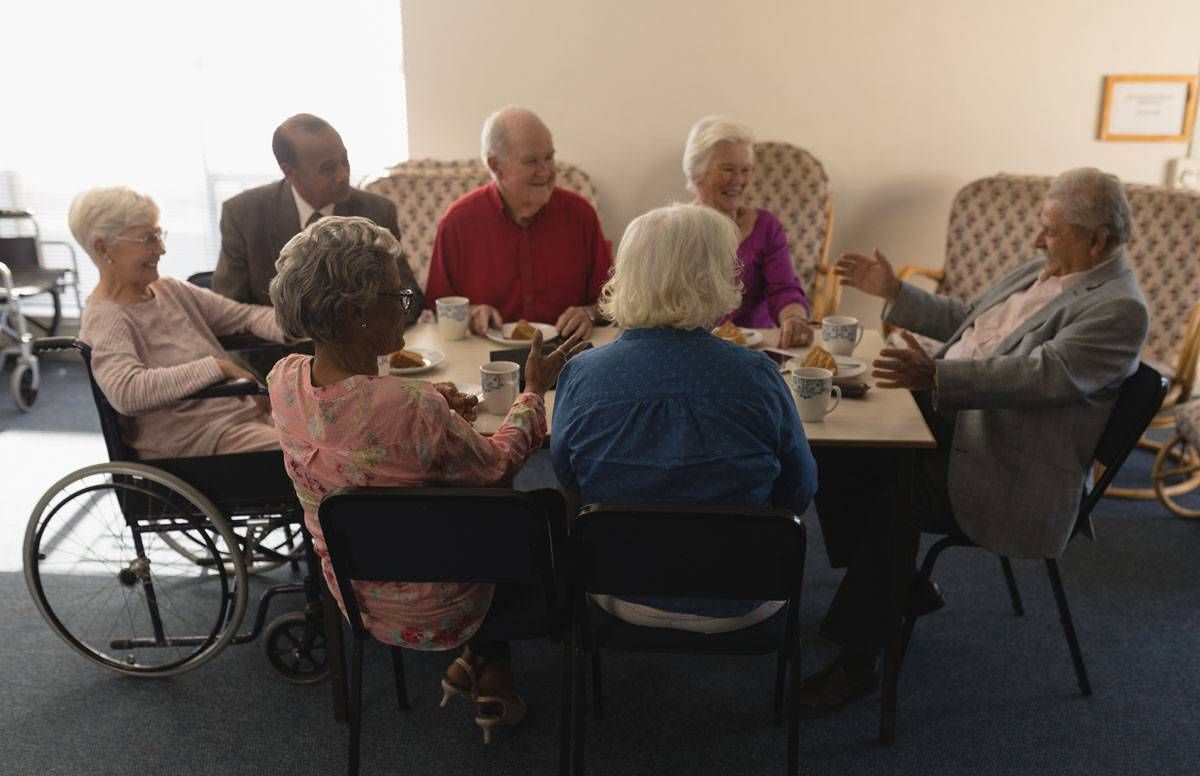Protecting Loved Ones in Long-Term Care During Coronavirus Outbreak
Experts say communication with administrators is key
(This story has been updated to reflect the American Health Care Association's subsequent recommendation about visiting nursing homes.)

As confirmed cases of the coronavirus (COVID-19) continue to spread across the U.S., concern for our own health and our loved ones’ health is understandably high. It’s especially worrisome for older adults, who are more vulnerable to this infection; for people with underlying health conditions or for those living in a congregate setting like a nursing home or an assisted living facility.
The recent news of multiple deaths at a nursing home near Seattle has led the American Health Care Association (AHCA), representing more than 13,500 long-term care facilities, to recommend no social visits to nursing homes. A March 9, 2020, statement to nursing home owners on the AHCA's website says: "The top priority at this point with COVID-19 is to prevent the virus from entering your nursing home, given the high case fatality rate in the elderly, which preliminary data shows at 15% or greater."
As a March 10, 2020, story in The New York Times reported, the "no-visits" policy some nursing homes are adopting is causing hardship for residents and family members who want to see each other.
People who are worried about their loved ones in nursing homes and assisted living communities need to know those facilities are doing all they can to protect residents, but how can they be sure?
“It’s natural if family members are worried,” says Dee Pekruhn, director of life plan communities services and policy at LeadingAge, an association of nonprofit providers of aging services, including nursing homes. Her own mother is in an assisted living facility.
“Know who your loved one’s caregivers are, and be in contact with them. I certainly do that with my mom regularly,” Pekruhn says, referring to the facility’s staff members who regularly see and care for her mother.
“The biggest thing for families is to talk to administrators of the nursing homes and find out exactly what they're doing."
LeadingAge has set up a webpage to help its members prepare and minimize risk of a potential outbreak, following guidance from the Centers for Disease Control and Prevention (CDC). Facilities should also be sharing information about coronavirus with family members, similar to what this Georgia-based nonprofit is doing.
Infections Can Spread Easily in Long-Term Care
Over 4 million Americans are admitted to, or reside in, nursing homes and skilled nursing facilities each year, and nearly 1 million live in assisted living facilities, according to the CDC. Data about infections in long-term care settings are limited, but researchers estimate 1 million to 3 million serious infections occur every year. These include respiratory tract, gastrointestinal and antibiotic-resistant illnesses like influenza, pneumonia, respiratory syncytial virus, norovirus and methicillin-resistant staphylococcus aureus (MRSA), among others.
Influenza ranks among the most commonly reported causes of outbreaks of infectious disease in nursing homes; outbreaks can occur even when resident vaccination rates are greater than 90%.
Nursing home residents tend to have multiple chronic diseases and other conditions that make them more susceptible to infection. They share sources of air, food, water and medical care, which expedite the introduction and subsequent transmission of certain infectious agents among vulnerable residents.
Visitors, staff and residents constantly come and go, bringing in pathogens from the hospital and the community. That’s why every facility is required to have an infection control and prevention plan in place.
What is the Facility Doing to Protect People?
However, some experts worry that the national staffing shortage in long-term care settings, especially among nurses, will affect a facility’s capacity to respond appropriately to the coronavirus.
“The biggest thing for families is to talk to administrators of the nursing homes and find out exactly what they're doing. And find out if they're bringing in more staff, if they have enough RNs [registered nurses] and if infectious disease experts are looking at what they're doing,” says Charlene Harrington, professor of nursing and sociology at the University of California San Francisco, who has advised the Centers for Medicare and Medicaid Services (CMS) on nursing home quality for more than a decade. “Try to put the pressure on because it's not very feasible to move people.”
Our Commitment to Covering the Coronavirus
We are committed to reliable reporting on the risks of the coronavirus and steps you can take to benefit you, your loved ones and others in your community. Read Next Avenue's Coronavirus Coverage.
During a serious outbreak of any communicable illness, a decision to ban visitors is usually made by the CDC, state or city public health department. It’s not a call that’s made lightly. Facilities must balance the resident safety with resident rights, says Jodi Eyigor, LeadingAge’s director of nursing home quality and policy.
“If you’re living in a nursing home during something like this, it's pretty frightening to be cut off from your family members,” Eyigor says.
Last week, CMS announced several actions aimed at preventing the spread of COVID-19. It reminded health care facilities to ensure appropriate infection control procedures are in place; addressed concerns about screening staff and visitors and provided guidance on steps to take if COVID-19 was suspected or identified.
CMS also plans to beef up inspections of facilities for serious health and safety violations.
Prudent Prevention in Place
Anywhere older people congregate in large numbers is a source of concern for health officials. Anne Blesch, 66, a retired nurse with a graduate degree in epidemiology, lives on the independent side of a continuing care retirement community in Florida. Management there has taken basic, but important, steps to help minimize the spread of infection.
“These are scenarios that our providers are very used to handling through their emergency operating procedures and infection control plans."
“The self-serve salad and soup bars in the dining room were closed, so two or three hundred people aren’t handling the same sets of tongs,” she says. Instead, one person behind the counter now serves residents.
Blesch says social events and activities have been cancelled. Notices were sent to residents asking them to stay in their apartments if they were sick, telling sick visitors to stay away and to limit even healthy visitors. Residents who use the building’s fitness center are asked to wipe down equipment after use.
“I think they're bending over backwards not to get too draconian about it. They're doing really reasonable things,” Blesch ays.
Questions to Ask Administrators About Infection Prevention
CMS has a list of suggested questions loved ones of people in long-term care facilities should ask administrators about their general infection prevention procedures. Among them:
- How does the facility communicate with residents, family and visitors when an outbreak of any type occurs?
- Are ill staff members allowed to stay home without losing pay? If they are not, they are more likely to come to work sick and inadvertently infect residents.
- Does the facility have private rooms for residents who develop signs or symptoms of a potentially contagious infection (cough, fever, abdominal pain)?
- How are staffers trained to respond to questions about hand hygiene from residents and family?
- How is shared equipment (such as objects in the therapy area or common room) managed to prevent the spread of germs?
Family members may want to bring in hand sanitizers and sanitizing wipes for loved ones living in long-term care facilities. “I would just recommend that they always check with the nursing home or make sure the staff knows that you're doing that and that you are communicating,” Eyigor says. That's because some products may interact with disinfectants the facility is already using.
Eyigor is confident that most nursing homes are doing their utmost to minimize the risk of transmission. “These are scenarios that our providers are very used to handling through their emergency operating procedures and infection control plans,” she says.
However, Harrington thinks more pressure is needed on state governments to enforce infectious disease management. “Even supposedly good nursing homes are operating way below what they should have on staffing, and they get these four and five stars (from CMS' Nursing Home Compare), even though staffing isn't what experts say it needs to be,” she says.
Fewer than 5% of older adults live in nursing homes and 2% live in assisted living, according to LeadingAge. Older adults living in single-family and multifamily settings also are at risk for the coronavirus, and may not have the benefit of heightened awareness and plans for infection control.
Everyone needs to be mindful of older adults’ vulnerability about coronavirus, as well as other serious diseases like influenza, and be proactive in following recommendations from public health officials regarding prevention.


